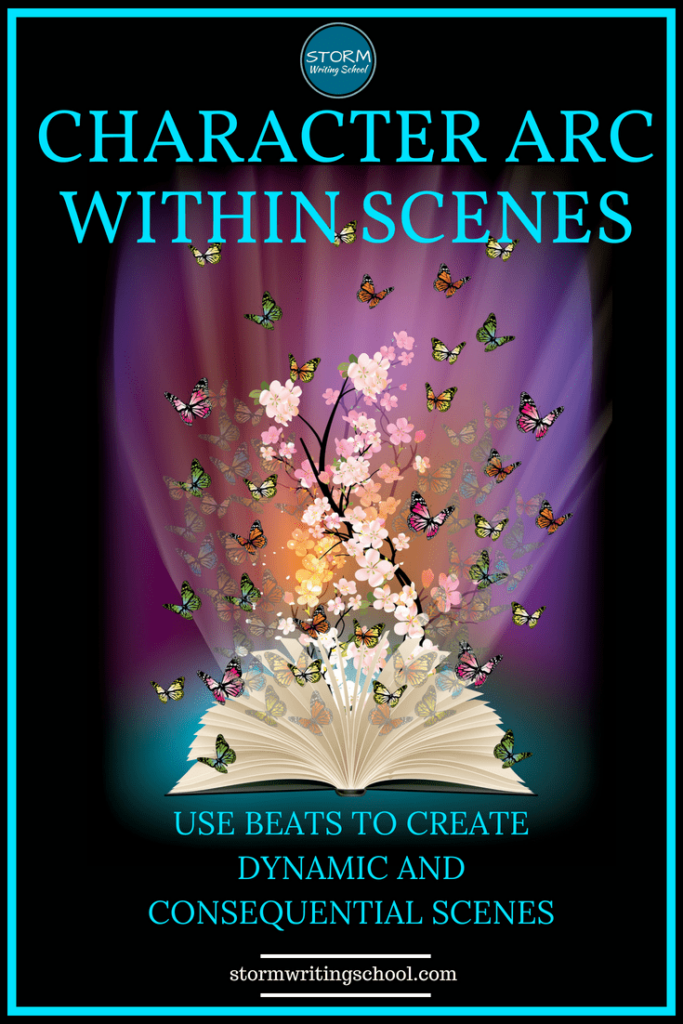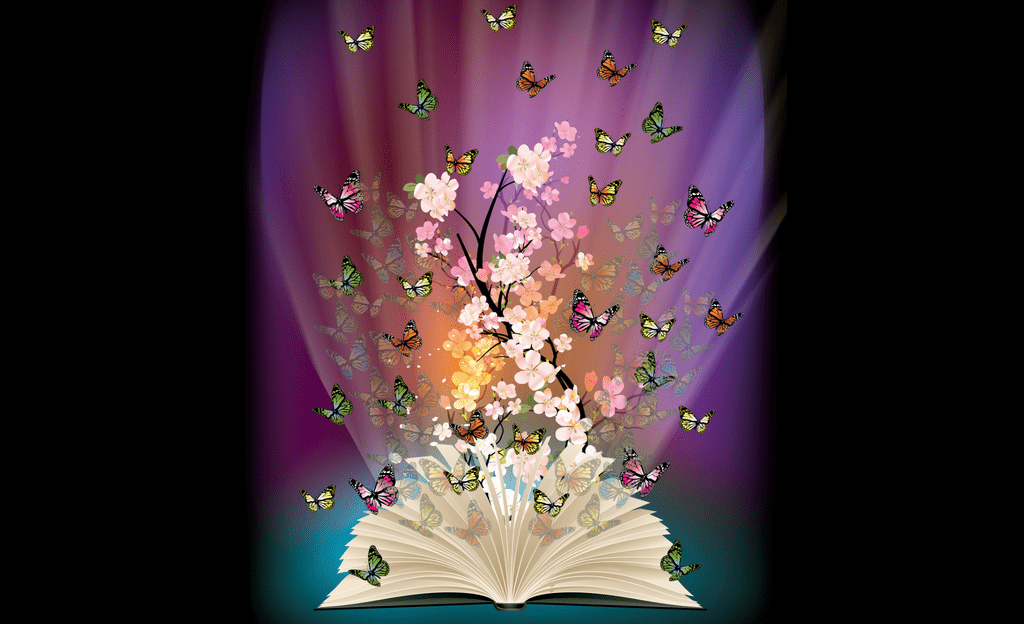My most recent post looked at the character arc of your story. By character arc, I mean the trajectory of the character as she evolves from a state in which she has a “character problem” (fear, flaw, lie, misbelief, need) toward a state of solving that problem (truth, self-revelation, essence) or at least more fully understanding it. Look back at that post for some orientation to the big picture.
But here, I’d like to examine how character movement happens at the more minute level. How do you move a character within a scene? Or, put differently, how do you create a consequential scene?

Story Units
Stories are made of small units. The unit most familiar to people is the scene. But in order to recognize character movement, it helps to break scenes down into even smaller units, known as beats. In story lingo, a beat can refer to a plot point within the larger story (hence the term “beat sheet,” which is a generic outline for your whole story. See Jami Gold, who has created story arc beat sheets for various story structure paradigms.)
But beats can also refer to the smallest unit of story. Robert McKee defines the beat as “an exchange of behavior in action/reaction.”
There’s an action or stimulus, and a character reacts. Then another action to which the character reacts. Each action/reaction constitutes a beat, and a series of them creates a scene.
I might prefer Shawn Coyne’s explanation of beats, though: “A beat is an identifiable moment of change.” That gets closer to explaining the importance and utility of beats. It is through the beats of the scene that you move the character.
(For more disambiguation about the word “beats,” which means multiple things in the world of writing craft, see this: What are beats?)
Story and Story-Unit Structure
The whole story has some structural components to it that you could argue are present at each of the smaller levels. Shawn Coyne talks about the five commandments of story and lists them as 1) inciting incident, 2) complication(s), 3) crisis, 4) climax, and 5) resolution. And Coyne says that all five of these need to be present within every unit of the story. So, just as the story as a whole contains all five, so does each act, and each sequence, and each scene, and each beat.
Now, I quibble a little with this at the beat level. I don’t think it’s all that productive to look for all five when you get down to the beat. I understand the argument that they’re all there, but they’re often a bit elliptical.
I’m borrowing that term, elliptical, from my grammar nerd lexicon. There’s a thing called an elliptical clause. An example would be the underlined section of this sentence: While running for the bus, I dropped my books.
You see, a clause is, by definition, a subject-verb pairing. But in that underlined half of the sentence above, there doesn’t appear to be a subject and verb. What that clause is actually stating, however, is this: “While I was running for the bus, I dropped my books.” So it is, in fact, a dependent clause.
The most common kind of elliptical clause is this one: I am taller than you. What’s missing? The verb. We understand that the speaker or writer of that sentence means, “I am taller than you are.”
A lot of beats are similarly elliptical. You can usually see an inciting incident and a resolution, but the complication, crisis, and climax are sometimes just as invisible as the verbs in the above elliptical clauses.
Beat Structure
So I propose this: a beat = a disturbance and a shift. That’s all.
There’s a stimulus—usually a conflict or a problem—and that “disturbance” results in a small shift for the character.
Take a look at the following passage. It’s from Book 1 of the Beyond the Spiderwick Chronicles series. I’ve been reading it to my kids, and this scene really had them gripped.
Nick is the POV character, and he and his new stepsister, Laurie, stumble upon a literal giant.
In the passage, I’ve separated each beat with a different color of text. Read the passage, and then afterwards, I’ll identify the disturbance and shift for you.
Exemplar Passage
Black eyes blinked slowly in the sandy soil. A massive swell curled into a fist. Roots ripped loose where vast limbs had been half-buried. The ground split and an enormous creature rose from it. Laurie screamed. The sound snapped Nick out of stunned staring and into action.
He ran toward his bike. As he threw one leg over the frame, he looked back.
The hill was standing, towering over them. It was wider than their house. Taller than the cranes that towered over the construction site.
“Get on!” he yelled. Laurie stumbled, her long skirt catching in the spokes as she hopped up on the seat. Nick pedaled anyway, hearing the fabric rip and feeling her fingers dig into his back.
“It’sfollowingit’sfollowingit’sfollowing,” Laurie said, her voice high and urgent.
Branches snapped, something thudded, and the ground shook. The bike wobbled and turned on its side. They both fell. Nick’s knees burned and his head was ringing as he pulled himself back on his feet. Laurie was already up, her skirt torn and her cheek smeared with dirt. Blood stained her lip, and the chain around her neck had snapped.
Nick lifted the bike as one of the giant’s feet slammed down beside him. Something wasn’t quite right with the front tire, but he didn’t have time to do anything but hope as he hopped onto it. Laurie got on behind him. He pedaled hard, wishing that he’d ridden his bike more, that he was more athletic, that his legs would move faster. If Julian had been there, he would’ve bike so fast that the giant would never have caught them, but Nick was slow and they were going to be crashed because of it.
Nick ignored his ragged breathing, ignored the pain in his muscles, ignored the sounds of smashing and crashing behind them and the dust pluming around them. Sweat rolled down his forehead and stung his eyes. He concentrated on pumping his legs.
“Right behind us,” Laurie squeaked.
Nick jerked the handlebars hard to the left, like he’d seen people in car chases on TV do, but instead of veering onto another path, he hit an embankment. The bike jumped into the air. He gritted his teeth and tried to hold it steady. This time they didn’t tip when they hit dirt. Nick just kept pedaling, faster and faster, as they sped through the woods.
“How about now?” he asked, grinning. He couldn’t believe how good that had felt. He wanted to cheer.
Disturbance + Shift
In beat #1 (red), the disturbance is a giant emerging from what Nick thought was a hill and the shift is the awareness that they need to flee.
In beat #2 (green), the disturbance is the giant’s size and the shift is increased urgency for getting out of there.
In beat #3 (orange), the disturbance is the bike falling over and the shift is their new state of being injured and unable to get away.
In beat #4 (purple), the disturbance is the giant’s proximity and the shift is Nick’s panic over the possible consequences of his lack of athleticism.
In beat #5 (blue), the disturbance is hitting the embankment and the shift is Nick’s satisfaction in getting away.
Scene Movement
There’s more to this scene, but this is enough to demonstrate how the beats accrue. Each shift moves the character a little, in this case, from awareness of danger to urgency to setback to panic to victory. The scene moves the character. That’s the goal with every scene. And it comes from paying attention to how each beat presents a disturbance and a shift.
Now, on a different day, I may have made some different decisions about where each beat begins and ends. Please do not get hung up on delineating the boundaries of your beats. As Shawn Coyne points out, you risk “losing the forest for the trees if you obsess about each and every beat.” The boundaries are less important than the cumulative effect of the shifts. Coyne also adds that “tinkering with beats is best left to the final finish work just prior to publication or production.”
So this is revision stuff. You don’t want to get caught up with beats in your drafting. But examination of beats can sometimes help you recognize where you’re going wrong if you have a scene that doesn’t seem to move the character enough.
See escalating complications for an analysis that complements this one very well. And if you want to get more practice in creating tension in scenes, take a class: The Tension Lab will give you loads of ideas and practical techniques for getting tension on every page; Story Momentum Mastery will walk you through the foundations of gripping scenes.






4 Responses
(I used a middle-grade example here because it has some pretty easily-distinguished beats in a short scene, but in classes of mine, I’ve used longer excerpts from adult novels, like The Lovely Bones and The Golem and the Jinni.)